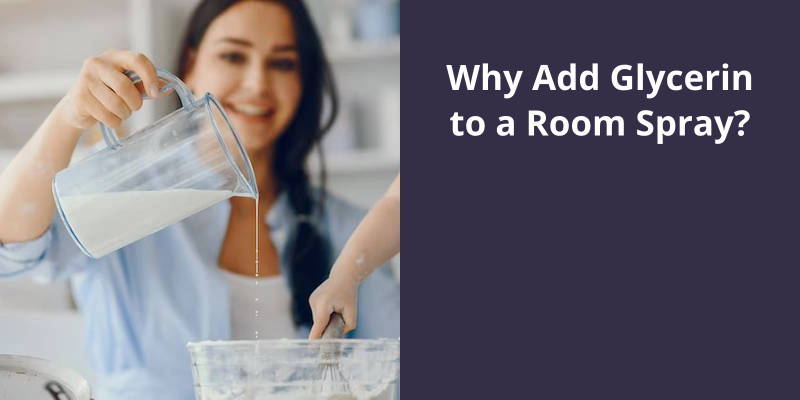Potassium alum can indeed be absorbed through the skin, however, the absorption rate is considered to be extremely low. It may not cause immediate issues due to its low absorption, but the regular and long-term use of products containing potassium alum still presents concerns related to cumulative exposure. Scientists and health experts are not entirely conclusive on the matter as some studies suggest potential links to health problems over time, such as Alzheimer’s or cancer, yet these studies are neither definitive nor universally accepted. It’s always advisable to check product labels, choose skin products wisely, and consult with medical professionals if there are any concerns.

What Effects Does Potassium Alum Have on the Skin?
This can give the appearance of smoother skin and decrease oiliness. Additionally, potassium alum has antibacterial properties, which can help reduce the growth of bacteria on the skins surface. This can be particularly beneficial for individuals with acne or other skin conditions caused by bacteria.
Potassium alum also has hemostatic properties, meaning it can help stop bleeding. When applied to minor cuts or abrasions, it can form a protective barrier and promote clotting to prevent further bleeding. This can be especially useful in first aid situations or for individuals with fragile skin.
Furthermore, potassium alum is known for it’s deodorizing effects. It’s the ability to inhibit the growth of odor-causing bacteria, making it a common ingredient in natural deodorants and antiperspirants. This can help control body odor and keep the underarms feeling fresh throughout the day.
However, it’s important to note that the effects of potassium alum on the skin may vary depending on the individual. It’s always recommended to perform a patch test before applying any new product to the skin to check for any adverse reactions.
These properties make it a popular ingredient in personal care products.
The safety of potassium alum as a deodorant has been a subject of debate. While the Environmental Working Group raises concerns about it’s long-term use, studies on it’s potential link to breast cancer show conflicting results.
Is Potassium Alum Safe to Use as Deodorant?
Potassium alum, commonly used in deodorants, has been a subject of debate when it comes to long-term safety. While it’s been considered safe and effective as an odor-fighting ingredient, concerns have been raised, prompting further investigation. The Environmental Working Group (EWG) acknowledges these concerns and questions whether potassium alum is suitable for prolonged use.
Several studies have examined the potential link between deodorants containing potassium alum and the incidence of breast cancer. However, the findings remain inconclusive, as some studies have found a connection, while others have dismissed any correlation. This discrepancy among research findings suggests that more investigation is needed before a definitive answer can be reached.
Despite the controversies surrounding potassium alum, it’s important to note that regulatory bodies, such as the Food and Drug Administration (FDA), have approved it’s use in cosmetics. However, individuals should consider their own personal risks and preferences before deciding whether to use products containing potassium alum.
The Role of Regulatory Bodies in Evaluating the Safety of Potassium Alum
- Regulatory bodies play a crucial role in evaluating the safety of potassium alum.
- They conduct thorough assessments and studies to determine the potential risks associated with it’s usage.
- Regulatory bodies analyze the chemical composition of potassium alum and assess it’s impact on human health.
- Through extensive research and analysis, they determine the safe levels of potassium alum that can be used in various products.
- Regulatory bodies also review manufacturing processes to ensure that the production of potassium alum adheres to safety standards.
- They monitor the labeling and packaging of products containing potassium alum to provide clear information to consumers regarding it’s use and potential risks.
- Regulatory bodies may impose restrictions or guidelines on the use of potassium alum in specific products or industries.
- They regularly update safety regulations based on new scientific findings and evidence regarding the safety of potassium alum.
- Regulatory bodies collaborate with scientific experts and industry professionals to ensure a comprehensive evaluation of potassium alum’s safety.
- Overall, regulatory bodies aim to safeguard public health by evaluating and regulating the safety of potassium alum in various applications.
Potassium alum, commonly known as fitkari in India, can be effectively used as a natural skin tightener. By gently rubbing an alum block over moist skin, allowing it to dry, and rinsing off with water, you can experience the benefits of reduced wrinkles and dried-out pimples.
Can I Use Potassium Alum on My Face?
Potassium alum, commonly referred to as fitkari in India, is a versatile crystal that can be used for various purposes, including skincare. When it comes to using it on your face, potassium alum can be an effective skin tightener. It’s astringent properties work wonders in reducing wrinkles and tightening the skin.
To maximize it’s benefits, one can simply rub an alum block gently over moist skin and allow it to dry. This process allows the alum to deeply penetrate the skin and work it’s magic. Once dry, it’s advisable to rinse off the alum with water, cleansing the face thoroughly. This routine can be incorporated into your skincare regimen to help minimize wrinkles and promote a more youthful appearance.
Not only does potassium alum help reduce wrinkles, but it also aids in drying out pimples. It’s natural antiseptic properties can help to minimize the occurrence of breakouts and soothe irritated skin. Using an alum block on affected areas can provide relief and promote faster healing. However, it’s essential to remember that everyones skin is unique, and results may vary.
Before incorporating potassium alum into your skincare routine, it’s wise to perform a patch test on a small area of skin to ensure compatibility and to rule out any allergies or adverse reactions. Furthermore, it’s important to note that excessive use of potassium alum can cause skin dryness, so it’s crucial to find a balance that works for your individual needs.
Additionally, it can aid in drying out pimples and soothing irritated skin. However, it’s important to proceed with caution, perform a patch test, and find a suitable balance to prevent potential skin dryness.
Potassium alum, commonly known as hydrated potassium aluminum sulfate, is indeed a compound that contains aluminum. It plays a vital role in the purification of drinking water as it helps in the precipitation of particles, ultimately improving water quality. However, it’s important to understand the composition of alum and it’s applications beyond just the presence of aluminum.
Is Potassium Alum Really Aluminum?
Potassium alum, often referred to as hydrated potassium aluminum sulfate, is a compound that’s multiple uses. One of it’s applications lies in the purification of drinking water, where it plays a pivotal role in facilitating the precipitation of particles. However, a common concern that arises is whether potassium alum can be absorbed through the skin.
While potassium alum does contain aluminum, it’s important to note that the two shouldn’t be misconstrued as being the same.
These studies have yielded varying results, with some suggesting that minimal absorption occurs, while others indicate that absorption can indeed take place. However, it’s worth highlighting that the overall absorption rate appears to be relatively low.
The low absorption rates could be attributed to the molecular size of potassium alum, which may hinder efficient penetration through the skin. Additionally, the skins natural barrier function further limits the entry of substances into the bloodstream. Nonetheless, it’s essential to take proper precautions when it comes to skincare products that contain potassium alum, especially for individuals with sensitive skin or a history of allergies.
To further mitigate any concerns, it’s advisable to consult with a healthcare professional or dermatologist who can provide tailored advice based on individual circumstances. They’d be able to shed more light on the potential risks associated with potassium alum and guide individuals on the most suitable course of action.
The Difference Between Potassium Alum and Other Types of Alum
Potassium alum, also known as potassium aluminum sulfate, is a specific type of alum that’s commonly used in various applications. It differs from other types of alum, such as ammonium alum and aluminum sulfate, in it’s chemical composition and properties.
One key difference is their composition. Potassium alum contains potassium, aluminum, and sulfate ions, whereas ammonium alum contains ammonium, aluminum, and sulfate ions. Both types are water-soluble and can form similar crystal structures.
In terms of uses, potassium alum is primarily known for it’s astringent and antiseptic properties. It’s been used for centuries as a natural deodorant, antiperspirant, and aftershave due to it’s ability to constrict blood vessels and reduce sweat production.
However, it’s important to note that while potassium alum can have certain benefits when applied topically, there’s limited research on it’s absorption through the skin. Studies indicate that only a small amount of aluminum is absorbed, which is then excreted by the body.
In conclusion, potassium alum is distinct from other types of alum in it’s chemical composition and properties. It’s ability to be absorbed through the skin is still a subject of debate, but research suggests that any potential absorption is minimal.
Source: Potassium alum
Alum, known for it’s beneficial properties, has been used as a remedy for various skin issues. Applying alum directly on the skin can effectively control excessive oiliness and tighten the skin, thanks to it’s powerful astringent properties.
Can We Apply Alum Directly on Skin?
One popular question often asked is whether potassium alum can be absorbed through the skin. Potassium alum is a versatile substance that’s been utilized for centuries due to it’s numerous health benefits. Many people wonder if it’s safe to apply alum directly on the skin to address various skin concerns. Well, the answer is yes.
Alum possesses potent astringent properties, making it an effective remedy for various skin problems. When applied to the affected area, alum helps control excess oil, minimize pores, and even tighten the skin. This natural remedy has become increasingly popular among those seeking to improve the texture and appearance of their skin.
To utilize alum for skin concerns, one can dissolve a small amount of potassium alum in water and apply it as a toner. This homemade toner helps to balance the pH level of the skin, minimize acne breakouts, and enhance the overall complexion.
Therefore, it’s crucial to consult a dermatologist or medical professional before incorporating alum into your skincare routine, especially if you’ve sensitive or allergy-prone skin.
Different Methods and Recipes for Using Alum as a Toner for Various Skin Concerns
- Using alum as a toner for acne-prone skin:
- Prepare a solution by dissolving alum powder in rose water.
- Apply the solution to the face using a cotton ball, focusing on acne-prone areas.
- Leave it on for 10-15 minutes, then rinse off with water.
- Repeat this process daily to help reduce acne and control oiliness.
- Using alum as a toner for skin tightening:
- Mix alum powder with water to create a paste-like consistency.
- Gently massage the paste onto your face and neck, focusing on areas with sagging skin.
- Leave it on for 15-20 minutes, then rinse off with cold water.
- Use this toning method twice a week to help tighten the skin and improve it’s elasticity.
- Using alum as a toner for skin brightening:
- Create a mixture of alum powder and lemon juice.
- Apply the solution to your face using a cotton pad, avoiding the eye area.
- Leave it on for 10-15 minutes, then rinse off with water.
- Repeat this process twice a week to help brighten the skin and fade dark spots.
Conclusion
Nonetheless, further research is warranted to explore the potential long-term effects and dermatological responses associated with prolonged usage.





